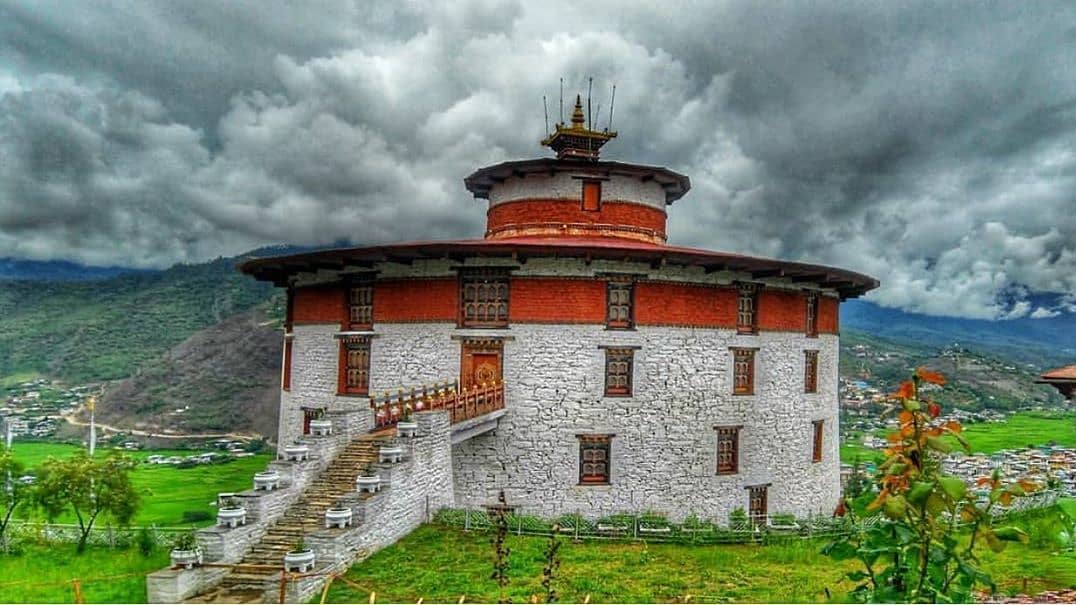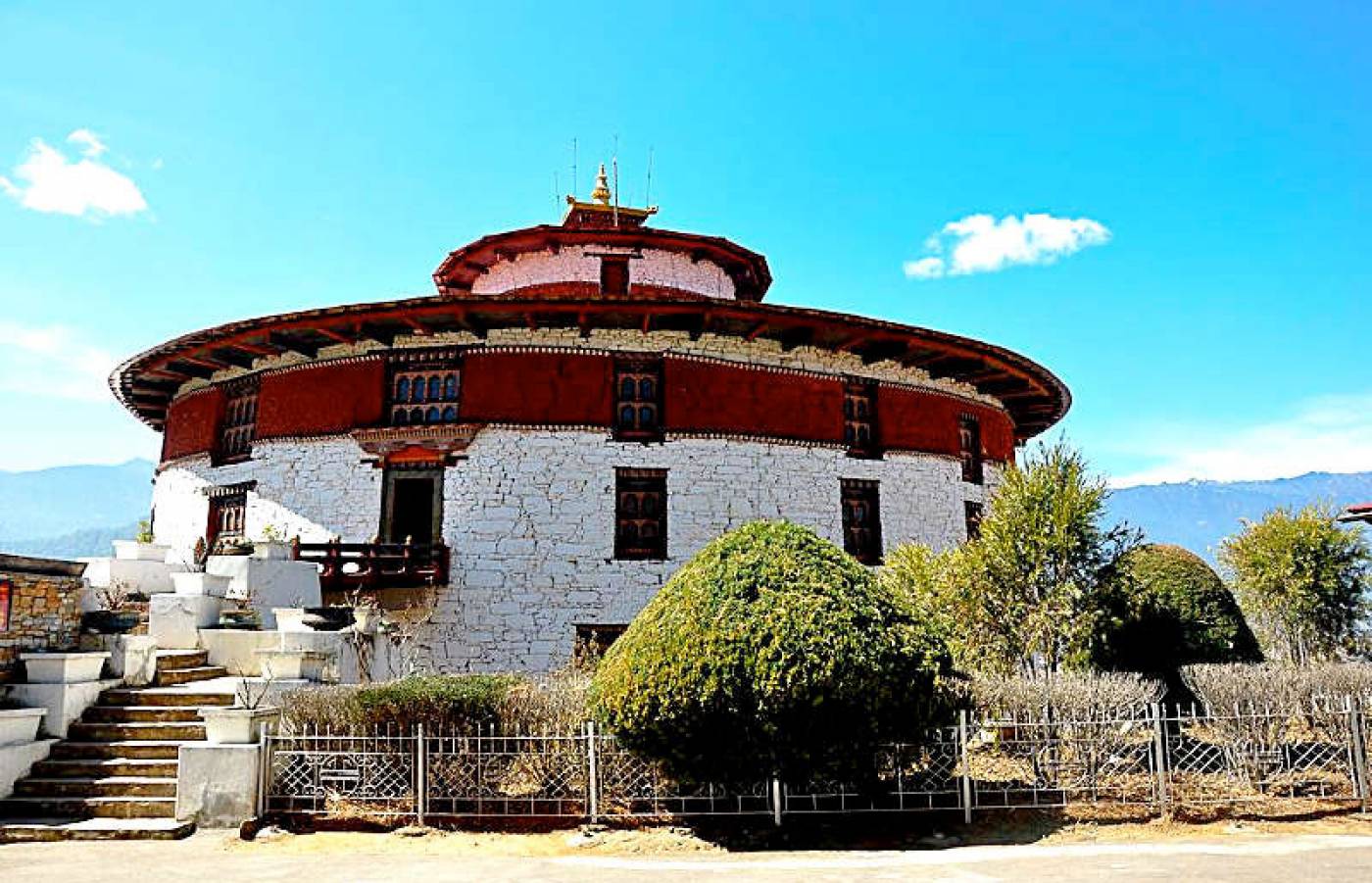Perched majestically above the town of Trongsa, Ta Dzong is not just an architectural marvel but a profound symbol of Bhutan’s rich history and culture. Initially built as a watchtower in 1652 by Chogyal Minjur Tempa, the first Governor of Trongsa, its primary purpose was to safeguard the Trongsa Dzong from internal rebellions. Today, this fortification stands as a tribute to the nation’s heritage, now serving as a fascinating heritage museum. For those embarking on a Bhutan luxury tour, a visit to this historical site is a must. It offers a unique blend of both educational and spiritual insights, making it an exceptional experience for travelers seeking a deeper understanding of the Kingdom’s past.
Historical Significance of Ta Dzong

Ta Dzong holds a pivotal place in the history of Bhutan. As the first Governor of Trongsa, Chogyal Minjur Tempa had the foresight to construct this strategic structure to defend the Trongsa Dzong against any threats, especially from internal conflicts. Located on a promontory overlooking the town, the watchtower provided a strategic vantage point, allowing sentries to keep an eye on the surrounding areas for potential danger.
The architectural design of Ta Dzong is an iconic blend of Bhutanese craftsmanship and defense strategy, characterized by its solid walls, narrow windows, and elevated position, making it an excellent vantage point. As you walk through the site on your luxury tour, you can imagine the watchful eyes of soldiers observing the surrounding valleys, keeping the peace within the region.
A Stunning Symbol of Bhutanese Architecture
What makes Ta Dzong unique among Bhutan’s many architectural gems is its four distinct observation points, each of which represents an important symbol in Bhutanese mythology and culture. The symbols – Tiger, Lion, Garuda, and Dragon – are not only significant in the context of the structure’s defense purpose but are also a reflection of Bhutan’s deep spiritual connection with nature and mythology. These symbols serve as guardians, invoking protection and strength, which adds an ethereal aura to this magnificent building.
For visitors, especially those on a luxury tour of Bhutan, the experience of walking through the tower and observing these powerful symbols is enchanting. The view from each of the observation points gives visitors the opportunity to connect with both the land and the history that shaped this part of Bhutan. The surrounding natural beauty, with the majestic mountains and pristine valleys, enhances the spiritual and historic allure of the site.
Ta Dzong as a Museum of Bhutanese History

In recent years, the Ta Dzong has been transformed into the most fascinating museum in Bhutan. The museum offers a detailed narrative of the country’s royal heritage and its cultural evolution. On your Bhutan luxury tour, a visit to the Ta Dzong Museum offers the chance to see an impressive collection of artifacts, paintings, and historical records that shed light on Bhutan’s unique journey through time.
The museum’s exhibits range from royal artifacts to everyday items used by the Bhutanese people, providing an intimate view into the daily lives of those who lived during different periods in history. It also highlights the significant role that the Trongsa region played in Bhutan’s development, especially during the reign of the Trongsa Penlop and the early formation of the Bhutanese monarchy.
One of the highlights of the museum is a shrine dedicated to King Gesar of Ling, an epic hero who is revered in Bhutanese culture. The shrine stands as a testament to the country’s deep spiritual beliefs and respect for legendary figures. As part of a Bhutan luxury tour, a visit to this shrine offers travelers a moment of reflection and a deeper understanding of the cultural practices that have shaped the nation’s identity over the centuries.
Ta Dzong and Its Cultural Relevance in Modern Bhutan
While Ta Dzong holds immense historical importance, it also plays a significant cultural role in modern Bhutan. The region of Trongsa has been regarded as a vital political center in Bhutan for centuries, and the Ta Dzong’s role in guarding this town highlights the strategic importance of the area. The building’s transition into a museum symbolizes the nation’s effort to preserve and share its cultural heritage with the world.
The museum is not only a space for preserving history but also a hub for educational activities, fostering a deeper appreciation for Bhutan’s unique cultural practices. For travelers on a Bhutan luxury tour, the experience is an opportunity to gain insights into the country’s political and cultural history, as well as the guiding principles of governance that have kept Bhutan a peaceful and harmonious society for generations.
Exploring the Surroundings: A Comprehensive Bhutan Luxury Tour Experience

No visit to Ta Dzong is complete without exploring the natural beauty that surrounds it. Situated on a hill overlooking the town of Trongsa, the views from Ta Dzong are simply breathtaking. Visitors on a luxury tour can take a leisurely walk through the area, experiencing the pristine beauty of the valleys, forests, and mountains that define this part of Bhutan.
The surrounding area also offers several other points of interest, including the Trongsa Dzong, which is one of Bhutan’s largest and most revered religious and administrative centers. Together, these sites create a comprehensive Bhutan luxury tour experience that immerses visitors in both the historical and natural beauty of this remarkable region.
Conclusion: A Uniquely Bhutanese Experience
A visit to Ta Dzong is not just about experiencing a historical landmark; it is about understanding the essence of Bhutan’s heritage and its cultural depth. From its role as a watchtower to its transformation into a museum, Ta Dzong encapsulates the Kingdom’s past, present, and future. For those embarking on a luxury tour of Bhutan, a trip to Ta Dzong is an unforgettable experience that combines history, culture, and spirituality. It is a reminder of the enduring strength and beauty of Bhutan, a country that continues to preserve its unique identity amidst the changing tides of the modern world.

